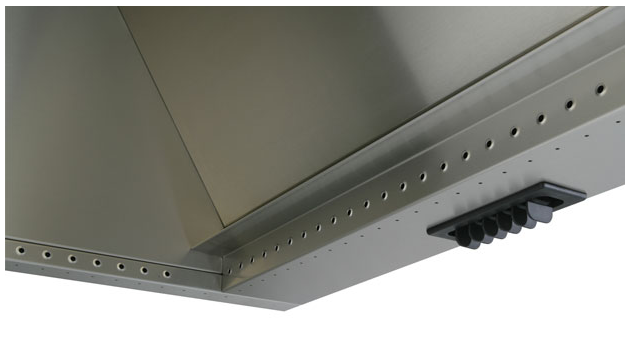
What are they?
Smoke, fumes, NOx, VOCs, and particulates – these are generally all things you want to remove from your building. There’s one problem: removing these lowers your building pressure, increasing infiltration. To fix this, air is often provided from a make-up air unit or a supply fan ducted to the outside. This make-up air introduces additional heating and cooling loads onto building HVAC systems, increasing their energy consumption.
Put simply, less exhaust = less make-up air = less energy consumption. One new way to do this is to improve exhaust hood capture efficiency: removing the same amount of contaminants while exhausting a smaller volume of air.
Induced jet exhaust hoods (sometimes called Aaberg hoods) are contaminant removal devices that utilize dozens of small, high-velocity jets of air around the perimeter of the hood to create turbulence in the air stream. This makes the hood more effective at capturing and “pulling in” harmful materials in the air stream. When properly designed, these hoods allow for a reduction in make-up air and exhaust flow rates without compromising air quality and employee health. As an added bonus, when used in new designs, capital cost savings can be achieved by reducing supply and exhaust fan sizes.
What are the best applications?
These work best in applications that require significant amounts of exhaust like welding, industrial processes, laboratories, large kitchens, etc. Also, the energy savings are most cost-effective when the space containing the exhaust hood is conditioned (at least heated).
How much do they cost?
One product with available cost data has a cost of about $1.20 per exhaust CFM for a large industrial hood system. This includes the controls and duct work needed to make the system work.
What are the savings?
These hoods have been around for a few years, but have not been widely adopted. They are available through a limited list of vendors. This technology is new enough that it is evaluated as a custom measure. From our experience, a reduction in air flow of 25-40% is possible with these devices. This corresponds to roughly 40-50% fan energy savings, with an additional 30-40% gas savings for heating reduction. Savings will be even higher if the space is cooled.




